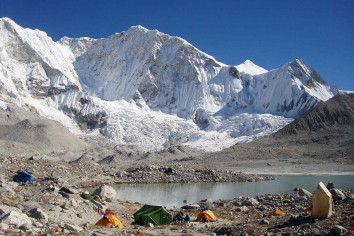Churen Himal Expedition - Trip Highlights
- Three prominent summits of Churen Himal- Central, Western, and Eastern, are at 7,375 metres, 7,371 metres, and 7,375 metres.
- A technically demanding Churen Himal peak is the best learning peak for intermediate mountaineers to sharpen their climbing skills.
- Utter presence of Dhaulagiri mountain to the east of Churen Himal summit.
- The varied wildlife like Blue Sheep, Black bear, Thar, and lush vegetation of Dhorpatan Hunting Reserve.
- Off the beaten trekking trail to base camp with diverse landscapes throughout the expedition.
- 100% safe and successful expedition led by our experienced Sherpa guides in front.
Churen Himal Expedition - Trip Overview
There are few authentic trekkers and climbers who like to discover untouched landscapes in the Himalayas. Moreover, the less crowded expedition makes the hike and climb serene and focused. For such, the Churen Himal expedition is a perfect trekking and climbing package. Trekking through Dhorpatan Hunting Reserve and catching glimpses of Mt. Dhaulagiri in the backdrop of this landscape is inspiring.
Amidst climbing and trekking peaks, Churen Himal and the surrounding landscape are less explored by travellers. There are only a handful of climbers each year who climb the summit of Churen Central. Lying on the Dhaulagiri range, Churen Himal comprises three different peaks. These are Churen Central, Churen West, and Churen East at 7,375 metres, 7,371 metres each. Among the three, Churen Himal central is the prominent peak for climbing.
A Japanese expedition team led by Mr. Kr. Fukui and K. Hasegawa first attempted the climb of Churen Himal in 1970 A.D. This expedition team successfully climbed all three Churen Central, West, and East peaks on October 24th, 1970. Due to many climbing issues, the Nepal government banned issuing permits for this peak expedition. But with many requests, today, Churen Himal peak is open for every climber.
The fast-flowing streams, glacial moraines, serene valleys, lush vegetation, and diverse landscape are the aesthetes of the trail to the Churen Himal expedition. The vivid rhododendron forests accompanied by countless wild animals of Dhorpatan Hunting Reserve are inspiring. Also, the seventh-highest peak, Dhaulagiri, at 8,167 metres, on the backdrop makes the prospect elegant. Further, the Annapurna range, Gurja Himal, and countless peaks are visible from the Churen Himal summit.
From a mountaineering perspective, climbing Churen Himal is moderately cumbersome. However, this peak is not for first-time climbers because it will be arduous and technical. The whole ascend and descend are IV graded, which requires expertise in climbing. For climbers seeking thrill and a less crowded expedition, the Churen Himal climb is ideal. Also, climbing this peak makes you eligible for other peak expeditions like Manaslu, Sishapangama, and Cho Oyu.
Churen Himal Expedition - Itinerary Overview
Our one-month Churen Himal expedition begins with a drive from Kathmandu to Pokhara. We'll then drive to Darbang from Pokhara and start hiking to Takam. Five days of trekking from Takam takes us through the inspiring landscape of Dhorpatan. The route follows Phalyagaun, Lulang, Gurjukhani, Darsingle Kharka, Bhujug Kharka, and Churen Himal base camp.
The serene nature and calm landscapes of the Churen Himal expedition are best for authentic travellers. You'll get the chance to see exotic wild animals and the vegetation of Dhorpatan.
We'll carry routine climbs and acclimatise ourselves at Churen Himal base camp. Also, in coordination with Sherpa guides, you'll excel your climbing techniques during the climbing period. We'll accommodate in camping style at Churen Himal base camp and advanced camps. After a successful summit, we'll descend down to Pokhara, retracing the route to Gurjagaon, Burjung Kharka, Lulang, Dharapani, and Darbang.
Accommodations in Churen Himal expedition
Tea house-based accommodation is best for the Churen Himal expedition. We'll also have camping-style overnights at Churen Himal base camp and throughout our stay for this expedition.
Tea houses offer food items and have varied items on the menu. You'll get the best available foods and proper rest during this trek. You may have to accommodate twin sharing at Churen Himal base camp tents, where our chefs and team will make your stay comfortable.
In Kathmandu, there are plenty of three-star hotels. You can get luxury service at the hotel of your choice. We will recommend a place to stay on request, but the expense will be yours.
Churen Himal Expedition- Climbing Experience
Churen Himal is an IV alpine graded peak. It means that the entire climbing of this peak is technical and strenuous. Thus, it is not for beginner climbers.
The composition of Churen Himal Central, West, and East is ice, rock, and snow of 20%, 30%, and 50%. Thus, proper mountaineering skills with a history of several mountain summits are a must.
Besides, physical fitness is also equally important. The longer trekking hours, summit push length, climbing, and abseiling are tiring.
Hence, proper physical fitness and broad climbing skills are significant for scaling Churen Himal successfully.
Gears for Churen Himal Expedition
Churen Himal is a 7,000 metres peak. Hence, every premium mountaineering gear is a must for a successful summit.
Summit socks, regular socks, premium summit shoes, and camp booties are a must for footwear. For bodywear, lightweight, heavyweight, and midweight layers are a must. Gore-Tex jackets, down jackets, wind, and waterproof jackets are not to miss. For the lower body, lightweight pants, mid-weight, heavyweight wears, down pants, and gore-tex pants are best. Head protection, hand protection, skin protection items, and sleeping bags are usual things to pack.
Our climbing Sherpa guide will send you a list of all necessary climbing equipment once you book this expedition with us. Also, to know more about equipment and backpack items, you can contact our representative at World Expedition Nepal.
Why World Expedition Nepal for Churen Himal Expedition?
World Expedition Nepal focuses on and promotes peak climbing and expeditions in Nepal. We have been providing tour services since 2017 by registered and licensed under Nepal Government. In the Dhaulagiri region, we'll make sure that you'll have complete joy alongside the adventure of high-altitude climbing.
Our professional and experienced guides will ensure your utmost comfort and safety on Churen Himal climbing. We'll make this tour an unforgettable experience for you. Also, the health and safety of our clients is our primary motto. Our guides for these expeditions have mountain skills certification. They come with expertise in mountain medicine, first aid, and rescue operations.
We have fixed departures for the Churen Himal expedition for Autumn 2022. Book your trip with us and experience the thrill of climbing this 6,000 metres peak.

 Recommended On
Recommended On
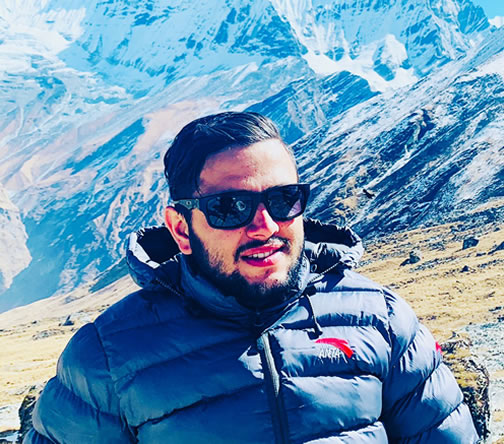
.jpg)



 7000m Peak Climbing , Nepal
7000m Peak Climbing , Nepal  26 Days
26 Days  US$9500
US$9500

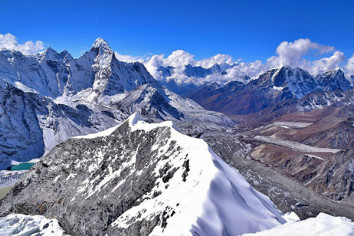
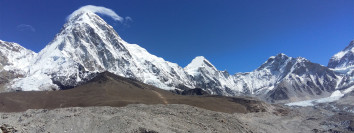


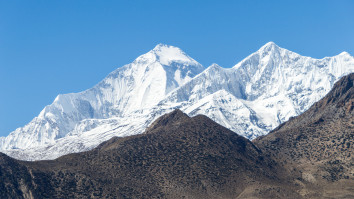
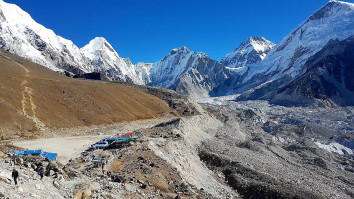
.jpg)
